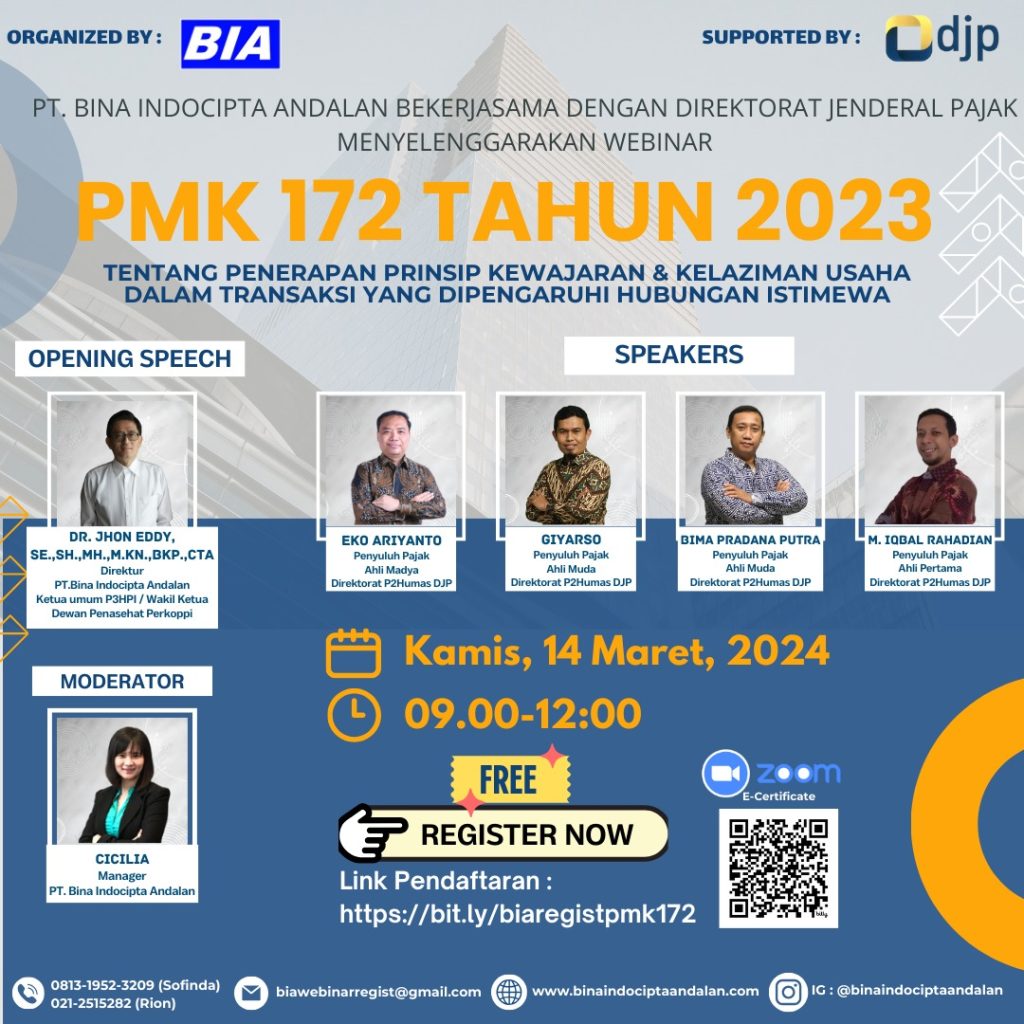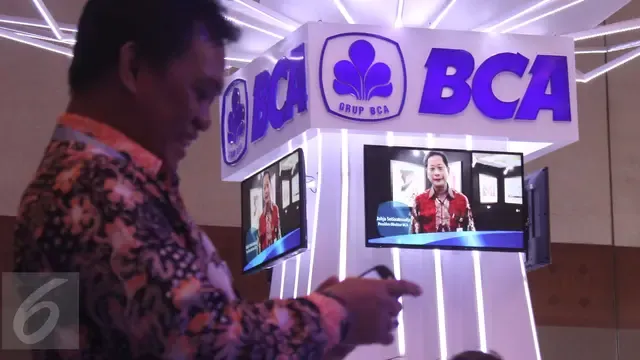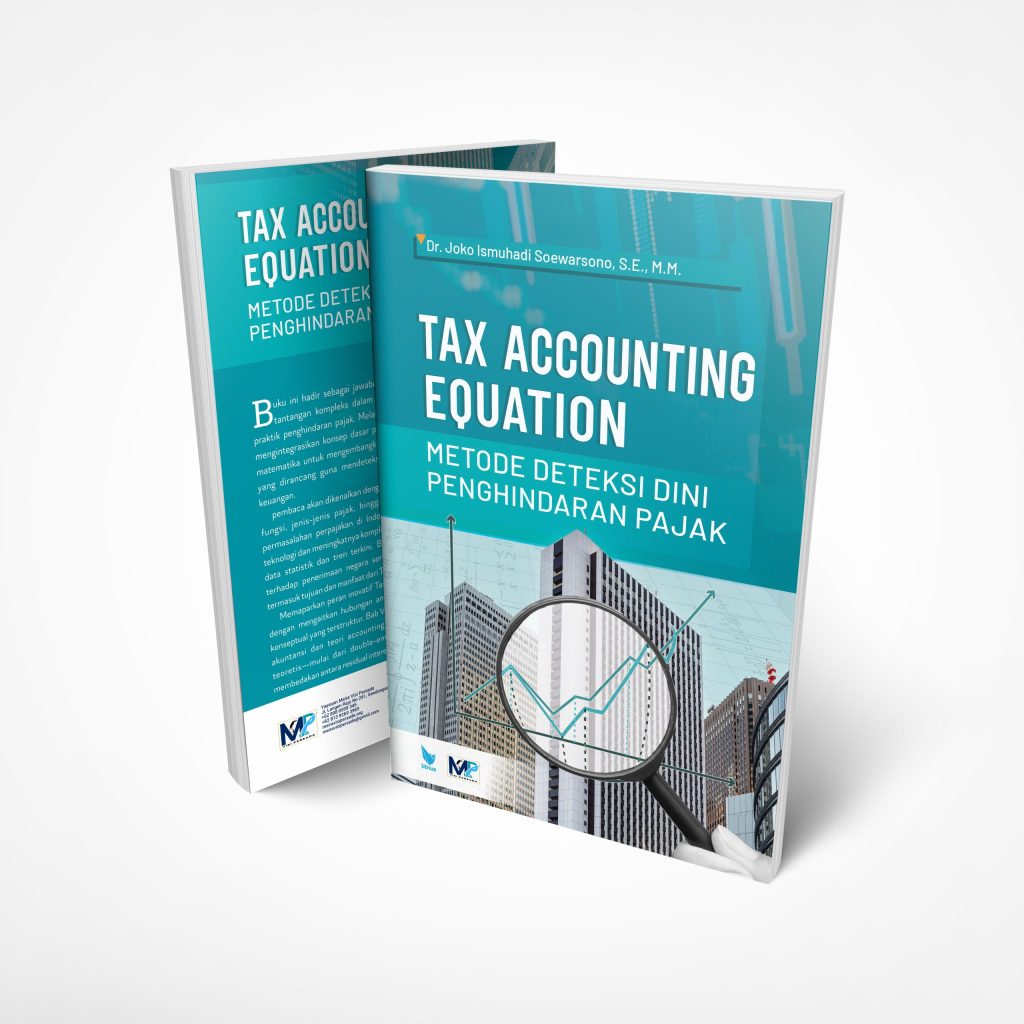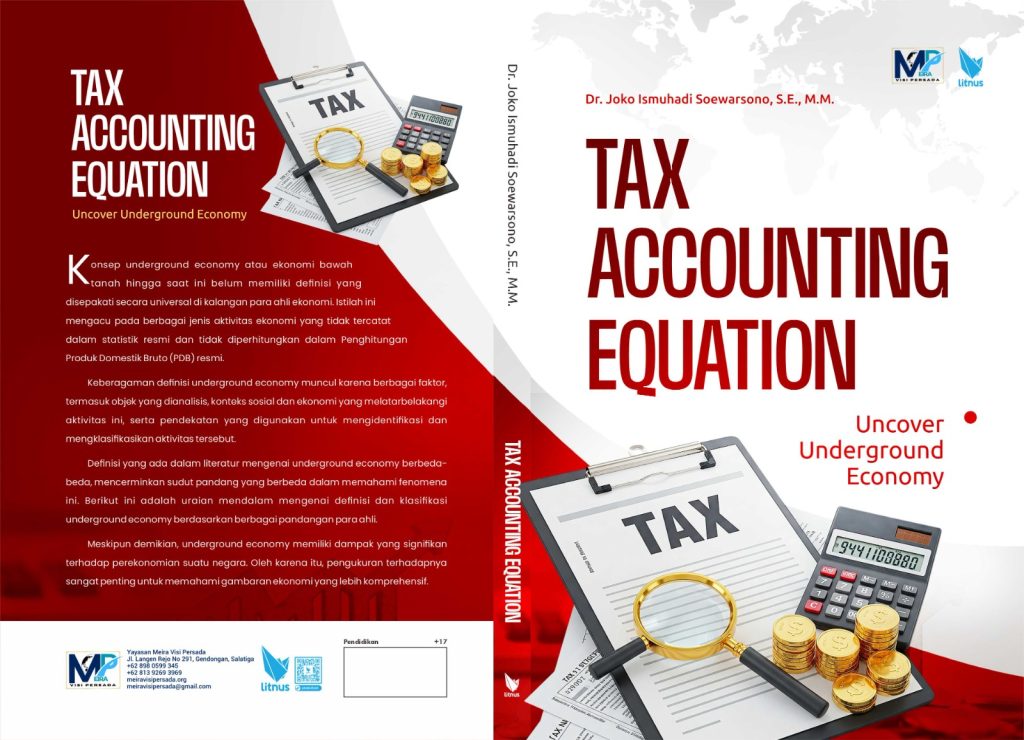
Analysis of Financial Strategies for Taxable Income Reduction in Indonesia
- Ekonomi
Friday, 25 April 2025 03:57 WIB
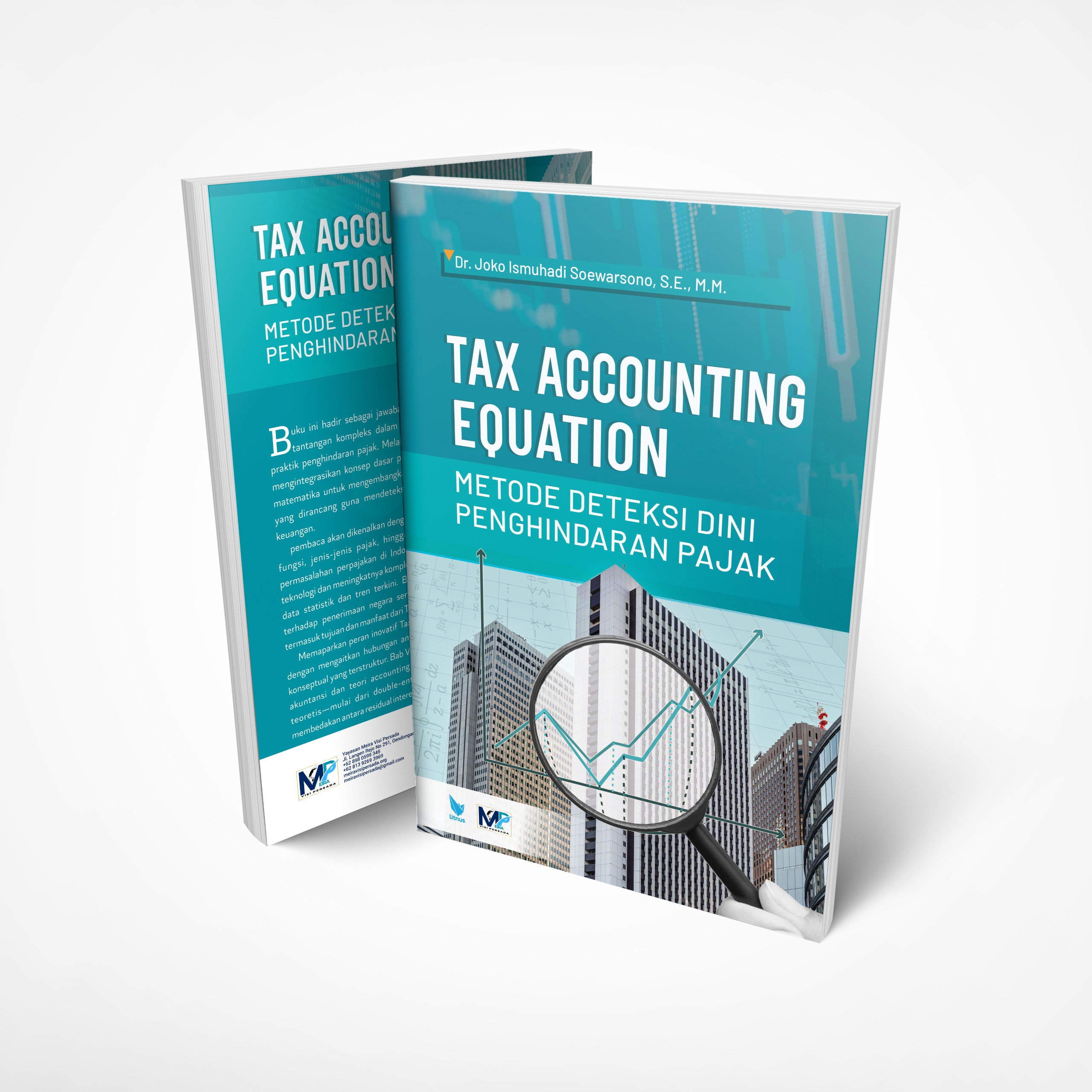
Jakarta, fiskusnews.com:
1. Introduction
Taxable income forms a critical basis for corporate taxation in Indonesia, significantly influencing the financial outcomes of businesses operating within the nation’s economic landscape. Consequently, there is a persistent interest among financial professionals and tax advisors in identifying and implementing strategies that can legally and ethically minimize this tax burden, thereby optimizing financial performance within the bounds of Indonesian law. This report undertakes a comprehensive analysis of three specific financial strategies often considered for taxable income reduction: back-to-back loans, the offsetting of accounts receivable and payable, and the application of the Tax Accounting Equation (TAE) developed by the Indonesian tax expert, Dr. Joko Ismuhadi. The primary objective is to evaluate the effectiveness and implications of these methods within the current Indonesian tax framework, with a particular focus on corporate income tax. Dr. Joko Ismuhadi, a recognized authority in Indonesian tax law and forensic accounting, has significantly contributed to the field through his development of the TAE, an analytical tool designed for enhanced tax detection and planning. This report will also explore the relevance and application of his innovative equation in the context of the aforementioned tax reduction strategies. The Indonesian government maintains a vigilant stance on tax avoidance practices, as evidenced by various regulations and enforcement efforts. Therefore, any strategy aimed at reducing taxable income must be meticulously evaluated against the prevailing legal and regulatory framework to avoid potential penalties and ensure compliance.
2. Demystifying Back-to-Back Loans in Indonesia
2.1. Defining Back-to-Back Loans:
A back-to-back loan, also known as a parallel loan, represents an agreement between two entities, often situated in different countries, to provide reciprocal loans, typically in their respective domestic currencies. The fundamental mechanism involves each company borrowing money in the other’s currency, effectively resulting in a currency exchange without directly participating in the foreign exchange market. The primary purpose of such an arrangement is often to hedge against currency risk, allowing each party to access the currency it needs while mitigating the potential adverse effects of fluctuations in exchange rates. By borrowing in their home currencies, the parties aim to avoid the volatility associated with open market currency transactions. While currency exchange risk mitigation is a common driver, back-to-back loans can also serve other business objectives, such as facilitating longer-term cash management or financing the acquisition of assets. The flexibility of back-to-back loans allows for the exchange of virtually any currency, which is particularly beneficial when dealing with currencies that are unstable or trade in low volumes, as these may not be readily available or efficiently traded in futures markets.
2.2. Mechanics of Back-to-Back Loans:
The operational mechanics of a back-to-back loan can be illustrated through the example of an American company seeking to establish a European office and a European company aiming to open an American branch. Instead of directly exchanging currencies in the open market, the American company might lend a specific amount in US dollars to the European company, while simultaneously, the European company lends the equivalent amount in euros to the American company, based on the prevailing exchange rate. This simultaneous lending in local currencies eliminates the currency risk that would be present if either company borrowed in a foreign currency and faced potential losses due to exchange rate movements upon repayment. Banks often play an intermediary role in facilitating back-to-back loans, particularly in scenarios involving a company needing local currency in a country where the bank is based. In such cases, the company might deposit funds in its home currency with the bank, which then, using the deposit as security, provides a loan in the desired foreign currency. The terms of these loans typically include a set maturity date, often within a 10-year timeframe due to the inherent risks associated with such agreements, and a predetermined interest rate. It is important to distinguish back-to-back loans from other financial instruments that use similar terminology. A back-to-back commitment, for instance, refers to a commitment to make a second loan that is contingent upon the fulfillment of the terms of an initial loan, commonly seen in the construction industry where a construction loan is rolled into a mortgage loan. Similarly, back-to-back interest rate swaps involve a bank entering into offsetting swap agreements with a borrower and a dealer to provide the borrower with a synthetic fixed-rate loan while managing the bank’s interest rate risk. The focus of this analysis remains on the loan structure itself and its potential impact on taxable income.
2.3. Relevance and Application in the Indonesian Business Environment:
In the Indonesian business environment, back-to-back loans could potentially be utilized by companies with international operations, particularly those engaging in trade or having subsidiaries in countries with volatile currencies. For instance, an Indonesian company with a subsidiary in a country experiencing significant exchange rate fluctuations might use a back-to-back loan to secure the necessary foreign currency for its subsidiary’s operations while hedging against potential losses from adverse currency movements. Furthermore, back-to-back loan arrangements could be employed within multinational groups operating in Indonesia as a form of intra-group financing. A parent company might channel funds to its Indonesian subsidiary through a back-to-back loan facilitated by another entity within the group, potentially located in a jurisdiction with favorable tax treaties. However, the Indonesian tax authorities closely scrutinize such intra-group financing arrangements to ensure they adhere to transfer pricing regulations and are not primarily aimed at tax avoidance.
2.4. Tax Implications Under Indonesian Law:
2.4.1. Interest Deductibility and Thin Capitalization:
Under Indonesian tax law, interest expenses incurred in the ordinary course of business are generally deductible for corporate income tax purposes, provided the related loan is used for business activities. However, this deductibility is subject to significant limitations, primarily through Indonesia’s thin capitalization rules. These rules, implemented through regulations such as Minister of Finance Regulation No. 169/PMK.010/2015 and further clarified by the Director General of Taxation Regulation No. 25/PJ/2017, aim to prevent companies from excessively financing their operations with debt to inflate interest deductions and reduce their taxable income. The core of these rules is a maximum allowable debt-to-equity ratio, which is currently set at 4:1. This means that the amount of debt on which interest can be deducted for tax purposes is limited to four times the company’s equity. For back-to-back loan arrangements, particularly those within the same multinational group, the interest expenses incurred would be subject to this thin capitalization rule. If the debt component of the back-to-back loan exceeds the 4:1 ratio, the interest attributable to the excess debt would not be deductible, thereby limiting the potential for taxable income reduction through this mechanism. Certain industries, such as banks, financial institutions, and infrastructure companies, are exempt from these thin capitalization rules due to their unique financing structures. However, for most other businesses in Indonesia, this regulation acts as a significant constraint on the tax benefits that can be derived from interest deductions on back-to-back loans.
2.4.2. Withholding Tax Obligations:
Indonesia imposes withholding tax (WHT) on interest payments made to non-residents. The standard WHT rate on interest paid to non-resident entities is generally 20%, unless a specific tax treaty between Indonesia and the recipient’s country of residence stipulates a lower rate. Back-to-back loan arrangements, especially those involving intermediaries located in jurisdictions with favorable tax treaties, could potentially be structured to reduce or eliminate this withholding tax, a practice known as treaty shopping. However, the Indonesian tax authorities are actively vigilant against such tax avoidance schemes and have implemented anti-treaty shopping provisions. To claim the benefits of a reduced WHT rate under a tax treaty, non-resident lenders are typically required to provide a Certificate of Residence (Form DGT1 or DGT2) issued by the tax authority in their country of residence. The Directorate General of Taxes (DGT) scrutinizes back-to-back loan arrangements involving entities in tax treaty jurisdictions to ensure that the recipient of the interest income is the beneficial owner and that the arrangement is not solely aimed at tax avoidance. If the DGT determines that a back-to-back loan structure is primarily motivated by tax avoidance and lacks genuine commercial substance, it may deny the application of the reduced treaty rate, subjecting the interest payment to the standard 20% WHT.
2.4.3. Scrutiny as Tax Avoidance Schemes:
Beyond the specific rules on interest deductibility and withholding tax, back-to-back loan arrangements face the broader risk of being classified as tax avoidance schemes by the Indonesian tax authorities, particularly if they appear to lack a genuine business purpose. The DGT possesses general anti-avoidance rules (GAAR) and specific anti-avoidance rules (SAARs) that empower them to challenge transactions whose primary motivation is tax reduction rather than legitimate commercial objectives. In certain abusive scenarios, the DGT might even recharacterize interest payments arising from back-to-back loans as dividends, which are subject to different tax treatment and may not be deductible for the payer. Furthermore, interest-free loans from shareholders to their Indonesian companies, often seen in some back-to-back structures, can create a risk of deemed interest being imposed by the tax authorities, leading to withholding tax obligations for the borrower. Indonesia, as a member of the OECD, also adheres to the recommendations of the Base Erosion and Profit Shifting (BEPS) Action Plan 4, which specifically targets the use of excessive interest deductions to erode the taxable base. Consequently, Indonesian companies engaging in back-to-back loan arrangements, especially with related parties, must be prepared to demonstrate a clear and legitimate commercial rationale for the transaction, independent of any potential tax benefits. Failure to do so could result in the DGT challenging the deductibility of interest expenses or imposing other adverse tax consequences.
3. The Role of Offsetting Accounts Receivable and Payable in Tax Management in Indonesia
3.1. Defining Offsetting Accounts Receivable and Payable:
The offsetting of accounts receivable (AR) and accounts payable (AP), also known as netting, is a financial strategy employed to simplify business transactions by consolidating multiple payments between the same parties into a single net amount. Accounts receivable represent the money owed to a company by its customers for goods or services sold on credit , while accounts payable represent the company’s obligations to pay its suppliers for goods or services purchased on credit. Instead of processing numerous individual invoices and payments, companies utilizing offsetting calculate the difference between the total amounts they owe to a particular counterparty (AP) and the total amounts that counterparty owes them (AR), and then settle only the net balance. This practice significantly reduces the number of individual transactions that need to be processed and reconciled, leading to decreased administrative efforts and faster settlement times. For multinational corporations engaged in cross-border trade, offsetting can also help mitigate risks associated with currency fluctuations by settling net balances in one currency instead of dealing with gross amounts in multiple currencies.
3.2. Impact on Taxable Income from an Indonesian Tax Perspective:
3.2.1. Value Added Tax (VAT):
In Indonesia, Value Added Tax (VAT) is generally levied on the delivery of taxable goods and services based on the accrual principle, meaning that VAT liability arises when the transaction occurs, regardless of when payment is made. While offsetting of AR and AP simplifies the payment process, it does not directly alter the underlying gross sales or purchases that form the basis for VAT calculation. Indonesian tax regulations likely require businesses to report the gross values of their sales and purchases for VAT purposes, irrespective of whether the actual settlement involves offsetting. In some jurisdictions, such as Guatemala, the offsetting of accounts payable and receivable for tax credit recognition may require specific documentation, such as a notarial instrument. While Indonesian law may not explicitly mandate notarial instruments for offsetting, maintaining clear and detailed records of all underlying invoices and the offsetting process is crucial for VAT compliance. The Directorate General of Taxes (DGT) emphasizes the importance of proper documentation for all transactions, and offsetting should not be used as a means to obscure the actual supply of goods or services that are subject to VAT.
3.2.2. Income Tax:
For income tax purposes in Indonesia, taxable income is generally calculated as the net profit, which is the difference between total revenue and deductible expenses. The offsetting of accounts receivable and payable primarily affects the cash flow and the presentation of net balances in the financial statements; it does not directly reduce the gross revenue earned by a company or the deductible expenses it incurs. While efficient working capital management, potentially facilitated by offsetting, might indirectly reduce the need for short-term borrowing and consequently lower interest expenses, this is an indirect impact rather than a direct reduction of taxable income through the offsetting process itself. Indonesian tax law has specific regulations regarding the deductibility of bad debts, which are uncollectible accounts receivable. To claim a bad debt deduction, a company typically needs to demonstrate that the receivable has been recognized as an expense in the commercial income statement, submit a list of uncollectible accounts to the DGT, and provide evidence of efforts to collect the debt, such as initiating legal action or obtaining a written agreement on debt cancellation. Offsetting might indirectly influence the assessment of whether a receivable is truly uncollectible, but the offsetting process itself does not automatically create a bad debt deduction for income tax purposes.
3.2.3. Accounting Standards and Legal Requirements in Indonesia:
Indonesian Financial Accounting Standards (SAK Indonesia) generally require financial statements to present a fair view of a company’s financial position and performance. While SAK Indonesia does permit the offsetting of financial assets and liabilities under specific conditions, these conditions typically relate to the legal right of set-off and the intention to settle on a net basis. The Financial Services Authority (OJK) in Indonesia also provides guidelines on offsetting, particularly in the context of consolidated financial statements, emphasizing the need for consistency and disclosure of any material facts or transactions between entities with different reporting dates. For tax purposes, it is crucial that any offsetting of AR and AP is properly documented to support the underlying transactions and their accurate reporting for VAT and income tax. The DGT may scrutinize offsetting practices, especially if they involve related parties, to ensure that they are not used to obscure the true economic substance of transactions.
3.3. Limitations and Considerations in Indonesia:
While offsetting AR and AP can enhance operational efficiency, there are limitations and considerations under Indonesian tax law. Offsetting between related parties, in particular, may attract greater scrutiny from the tax authorities, who will be keen to ensure that the transactions are conducted at arm’s length and have a genuine business purpose. The primary concern is that offsetting should not be used as a tool to artificially reduce the amounts of sales or expenses reported for tax purposes, which could be construed as tax avoidance. Companies must be prepared to demonstrate a clear commercial rationale for engaging in offsetting, especially with related entities, and ensure that the practice does not lead to an inaccurate representation of their taxable income or VAT liabilities. The DGT has anti-avoidance measures in place to counter any arrangements that lack genuine business substance, and offsetting is no exception. Therefore, while offsetting is a legitimate cash management technique, its application should be carefully considered within the Indonesian tax context to avoid potential challenges from the tax authorities.
4. Dr. Joko Ismuhadi’s Relationship Tax Accounting Equation: A Forensic Lens on Tax Reduction
4.1. Introducing Dr. Joko Ismuhadi and the Tax Accounting Equation (TAE):
Dr. Joko Ismuhadi Soewarsono is a prominent Indonesian tax specialist and academic with extensive experience in both tax practice and academic innovation. His background includes a distinguished career as a tax auditor and supervisor within the Directorate General of Taxes (DGT), coupled with significant academic contributions in the fields of tax accounting and tax law. A key aspect of Dr. Ismuhadi’s contribution to the field of taxation is the development and promotion of the Tax Accounting Equation (TAE). This innovative mathematical model is designed as an analytical tool for examining taxpayer financial statements, with the primary objective of early detection of potential tax avoidance and/or embezzlement. The TAE is recognized as a valuable forensic accounting tool for Indonesian tax analysis, offering a unique perspective on identifying financial irregularities that might indicate tax evasion or aggressive tax planning.
4.2. Principles and Formula of the TAE:
The Tax Accounting Equation (TAE) developed by Dr. Joko Ismuhadi is rooted in the fundamental accounting equation (Assets = Liabilities + Equity) and the expanded accounting equation, which further details the components of equity. For the purpose of tax analysis, particularly in scenarios where taxable income might be manipulated, Dr. Ismuhadi formulated the basic TAE as: Revenues – Expenses = Assets – Liabilities. This equation can also be rearranged to: Revenues = Expenses + Assets – Liabilities. The rationale behind this specific formulation lies in its direct focus on the relationship between the income statement (Revenues and Expenses) and the balance sheet (Assets and Liabilities). The TAE is predicated on the principle that there should be a logical consistency between a company’s reported profitability and its net asset position. Significant imbalances or unusual patterns in this equation may serve as indicators of potential tax avoidance practices, such as the deliberate understatement of revenues or the overstatement of expenses.
4.3. Application of the TAE in Detecting Tax Avoidance and Financial Irregularities in Indonesia:
Dr. Ismuhadi’s Tax Accounting Equation offers several key applications in detecting tax avoidance and financial irregularities within the Indonesian context. Tax authorities can utilize the TAE as a tool for the early identification of potential tax evasion and aggressive tax planning by analyzing the financial statements of taxpayers through its framework. Discrepancies and unusual patterns revealed by the TAE can prompt tax officers to conduct more in-depth investigations. For example, the equation can help in identifying instances where revenues might be intentionally understated or expenses overstated, as these manipulations would likely result in an imbalance within the TAE when compared to the asset and liability sides of the financial statements. The TAE is also instrumental in identifying potentially misleading accounting transactions, such as the recording of revenues as liabilities or expenses as assets, often through the use of clearing accounts. By highlighting these unusual inverse relationships, the TAE can act as a red flag, prompting further scrutiny by tax authorities. Furthermore, the TAE is particularly relevant in analyzing transactions within group companies, especially those integrated from upstream to downstream, where complex financial engineering activities might be employed to shift profits or inflate costs to minimize overall tax liability. Applying the TAE to the consolidated or individual financial statements of these related entities can help uncover such potentially tax-avoidant transactions. The TAE also has potential applications in uncovering activities related to the underground economy by detecting inconsistencies in reported financial data.
4.4. Using the TAE to Evaluate Back-to-Back Loans and Offsetting Accounts:
Dr. Ismuhadi’s Tax Accounting Equation can provide a valuable lens through which to evaluate the financial implications of back-to-back loans and the offsetting of accounts receivable and payable. When examining companies engaging in back-to-back loan arrangements, the TAE can help identify potential inconsistencies. For instance, a significant increase in liabilities (due to the loan received) that is not accompanied by a corresponding rise in revenue-generating assets might suggest that the loan’s primary purpose is not operational investment but potentially tax-related. Similarly, the TAE can be applied to assess the impact of offsetting accounts. While the act of offsetting itself might not directly alter the equation, unusual fluctuations or significant write-offs related to AR and AP balances could lead to imbalances in the TAE, warranting further investigation into the underlying transactions. Intentional misclassification of transactions related to back-to-back loans or offsetting practices could also lead to discrepancies in the TAE. For example, if a loan is disguised as a regular trade payable to circumvent thin capitalization rules, the resulting financial statement figures might create an imbalance when analyzed through the TAE framework. In essence, the TAE serves as an initial analytical tool to flag potential areas of concern in financial reporting that might be linked to aggressive tax reduction strategies involving these financial techniques.
5. Analyzing the Effectiveness of the Strategies in Reducing Taxable Income in Indonesia
5.1. Back-to-Back Loans:
While back-to-back loans might superficially appear as a mechanism to reduce taxable income through interest deductions, their effectiveness in the Indonesian context is significantly constrained by several factors. The primary limitation stems from Indonesia’s robust thin capitalization rules, which restrict the deductibility of interest expenses when a company’s debt-to-equity ratio exceeds 4:1. Any interest expense attributable to debt exceeding this ratio is non-deductible, thereby curtailing the potential for substantial tax reduction through this avenue. Furthermore, the possibility of reducing withholding tax on interest payments to non-residents via back-to-back loan structures is severely limited by Indonesia’s anti-treaty shopping provisions and the active scrutiny of such arrangements by the Directorate General of Taxes (DGT). The DGT is increasingly vigilant in identifying and challenging arrangements that lack genuine commercial substance and are primarily motivated by tax avoidance. Back-to-back loans, particularly those involving related parties, carry a significant risk of being classified as tax avoidance schemes if a legitimate business purpose cannot be clearly demonstrated. In such cases, the DGT may disallow interest deductions or even recharacterize interest payments as dividends, which are not deductible for the payer, thus negating any intended tax benefits.
5.2. Offsetting Accounts Receivable and Payable:
The offsetting of accounts receivable and payable is primarily a tool for enhancing cash flow management and improving operational efficiency by reducing the number of transactions between parties. However, it does not offer a direct or reliable method for reducing taxable income under Indonesian tax law. While better working capital management resulting from offsetting might indirectly lead to lower borrowing costs and thus reduced interest expenses, this is not a direct tax reduction mechanism tied to the offsetting process itself. The DGT is likely to scrutinize any use of offsetting that appears to conceal underlying transactions or manipulate financial reporting to achieve tax advantages. Indonesia has specific regulations governing the deductibility of bad debts, which are related to accounts receivable, and offsetting practices might indirectly play a role in assessing the collectability of these debts. However, the offsetting process itself does not automatically qualify a receivable as a bad debt for tax deduction purposes. Therefore, while offsetting is a valuable operational technique, it should not be viewed as a primary strategy for reducing taxable income in Indonesia.
5.3. Dr. Joko Ismuhadi’s TAE as an Evaluation Tool:
Dr. Joko Ismuhadi’s Tax Accounting Equation (TAE) serves as a valuable forensic tool that can be utilized to evaluate the potential for tax irregularities arising from the use of back-to-back loans or unusual offsetting practices. As discussed in section 4.4, the TAE can help identify inconsistencies in financial statements that might indicate aggressive tax reduction strategies. For instance, significant liabilities from back-to-back loans without a corresponding increase in assets, or unusual patterns in AR and AP balances due to offsetting, could lead to imbalances in the TAE, flagging these areas for further review. It is important to note that while the TAE can highlight potential issues and inconsistencies, it does not provide definitive proof of tax evasion or aggressive tax planning. Rather, it acts as a signal for both taxpayers (for self-assessment and ensuring compliance) and tax authorities (for identifying areas that warrant more detailed investigation) to further examine the legitimacy and tax implications of the financial strategies employed.
6. Legal and Regulatory Considerations and Compliance in Indonesia
6.1. Key Indonesian Tax Laws and Regulations:
Navigating tax reduction strategies in Indonesia requires a thorough understanding of the relevant legal and regulatory framework. Key tax laws include the Income Tax Law (Undang-Undang Pajak Penghasilan or UU PPh) , which governs corporate and individual income tax; the Value Added Tax Law (Undang-Undang Pajak Pertambahan Nilai or UU PPN) , which applies to the supply of goods and services; and the Law on General Provisions and Tax Procedures (Undang-Undang Ketentuan Umum dan Tata Cara Perpajakan or UU KUP) , which outlines the general rules and procedures for tax administration. Specific regulations are crucial for understanding the nuances of tax reduction strategies. For back-to-back loans, the Minister of Finance Regulation No. 169/PMK.010/2015 and its implementing regulation, Director General of Taxation Regulation No. 25/PJ/2017 , detail the thin capitalization rules. Withholding tax (WHT) on interest payments is governed by Articles 23 and 26 of the Income Tax Law. Transactions involving related parties and transfer pricing are subject to regulations such as the Minister of Finance Regulation No. 172 Tahun 2023. The Directorate General of Taxes (DGT) plays a central role in interpreting and enforcing these laws and regulations, issuing further guidance and conducting tax audits.
6.2. Compliance Requirements for Back-to-Back Loans:
For companies engaging in back-to-back loan arrangements in Indonesia, strict adherence to compliance requirements is essential. This includes maintaining comprehensive documentation of the loan agreements, clearly outlining the interest rates, repayment schedules, and the underlying business purpose of the loan. Cross-border loans often necessitate specific reporting to the Indonesian tax authorities. In transactions involving related parties, the interest rates must strictly adhere to the arm’s length principle, reflecting market rates for comparable transactions between independent entities. Compliance with Indonesia’s thin capitalization rules is paramount, requiring accurate calculation and monitoring of the debt-to-equity ratio. When making interest payments to non-resident lenders under back-to-back loan agreements, companies must ensure the proper withholding and remittance of the applicable withholding tax (WHT), along with obtaining the necessary documentation, such as the Certificate of Residence (DGT Form), if claiming benefits under a relevant tax treaty. Failure to meet these compliance obligations can lead to penalties, disallowance of interest deductions, and potential challenges from the DGT.
6.3. Compliance Requirements for Offsetting Accounts Receivable and Payable:
Companies utilizing the offsetting of accounts receivable and payable in Indonesia must also comply with specific requirements. This includes maintaining clear and accurate records of all the underlying invoices and transactions that are being offset. The practice of offsetting should align with the principles and guidelines outlined in Indonesian Financial Accounting Standards (SAK Indonesia) regarding when and how offsetting is permissible and should be reported in the financial statements. Proper documentation that substantiates the origin of both the AR and AP balances and clearly details the offsetting process is crucial for compliance. Especially in cases involving related parties, companies should be prepared to justify the business rationale for the offsetting arrangement to the tax authorities. It is imperative that offsetting does not result in the incorrect reporting of gross revenue or deductible expenses for either income tax or VAT purposes. If the offsetting of AR leads to the conclusion that certain amounts are uncollectible, companies must adhere to the specific regulations and procedures for claiming bad debt write-offs in Indonesia.
6.4. Anti-Avoidance Measures in Indonesia:
The Indonesian tax system incorporates robust anti-avoidance measures to prevent taxpayers from engaging in transactions primarily aimed at reducing their tax liabilities without a legitimate business purpose. The Directorate General of Taxes (DGT) is increasingly employing sophisticated methods to detect and combat tax evasion and aggressive tax planning. This includes the application of the General Anti-Avoidance Rule (GAAR) and various Specific Anti-Avoidance Rules (SAARs) that allow the DGT to challenge transactions that lack genuine commercial rationale. Therefore, it is crucial for companies operating in Indonesia to ensure that any tax reduction strategy they implement, including back-to-back loans and offsetting arrangements, has a clear and demonstrable commercial rationale that outweighs the tax benefits. Indonesia’s active participation in international initiatives such as the OECD’s Base Erosion and Profit Shifting (BEPS) project further underscores its commitment to tackling tax avoidance and ensuring that multinational enterprises pay their fair share of taxes.
7. Conclusion and Expert Recommendations
In conclusion, while back-to-back loans and the offsetting of accounts receivable and payable are financial strategies that can serve legitimate business purposes, their effectiveness in directly reducing taxable income in Indonesia is limited and fraught with risks. Back-to-back loans face significant constraints due to Indonesia’s thin capitalization rules, withholding tax obligations, and the high likelihood of scrutiny as potential tax avoidance schemes if they lack genuine commercial substance. Offsetting accounts, while beneficial for cash flow and operational efficiency, does not directly reduce the gross revenue or deductible expenses that form the basis of taxable income under Indonesian tax law. Dr. Joko Ismuhadi’s Tax Accounting Equation (TAE) offers a valuable forensic tool for identifying potential inconsistencies in financial statements that might arise from aggressive tax reduction strategies involving these techniques, serving as a useful indicator for further investigation.
Based on this analysis, the following recommendations are provided for businesses considering these strategies in Indonesia:
- Prioritize Genuine Business Purpose: Ensure that any use of back-to-back loans or offsetting arrangements is driven by clear business objectives and has demonstrable commercial substance, rather than being primarily motivated by tax benefits.
- Maintain Meticulous Documentation: Comprehensive and accurate documentation is crucial for all transactions, including loan agreements, repayment schedules, the rationale for back-to-back structures, and detailed records of all underlying invoices and the offsetting process for AR and AP.
- Ensure Full Compliance: Strict adherence to Indonesia’s thin capitalization rules, arm’s length principles for related party transactions, and all withholding tax obligations is essential to avoid penalties and challenges from the DGT. For offsetting, ensure compliance with Indonesian Financial Accounting Standards (SAK Indonesia).
- Seek Expert Professional Advice: Engage with experienced tax advisors specializing in Indonesian tax law to thoroughly evaluate the tax implications of any proposed strategies before implementation.
- Utilize Forensic Accounting Tools: Consider incorporating tools like Dr. Joko Ismuhadi’s TAE for internal assessment and compliance checks to proactively identify potential areas of concern in financial reporting.
- Stay Updated on Regulatory Changes: The Indonesian tax landscape is dynamic. Businesses should remain informed about the latest tax laws, regulations, and guidance issued by the Directorate General of Taxes (DGT).
Ultimately, ethical and legally sound tax planning, rooted in genuine business activities and full compliance with Indonesian tax regulations, is the most sustainable approach for managing tax liabilities in Indonesia.
Key Tables:
Table 1: Summary of Indonesian Thin Capitalization Rules
| Feature | Description |
|---|---|
| Debt-to-Equity Ratio (DER) | Maximum allowable DER is 4:1. Interest on debt exceeding this ratio is generally not tax deductible. |
| Definition of Debt | Includes short-term and long-term debt, and interest-bearing trade payables. |
| Definition of Equity | Based on Indonesian Financial Accounting Standards (SAK), plus interest-free loans from related parties. |
| Exemptions | Banks, financing institutions, insurance and reinsurance companies, oil and gas and mining companies under specific contracts, companies subject to final tax regimes, and companies engaged in infrastructure businesses may be exempt. |
Table 2: Indonesian Withholding Tax Rates on Interest for Non-Residents
| Feature | Description |
|---|---|
| Standard WHT Rate | Generally 20% on gross interest paid to non-residents. |
| Potential Reduction | May be reduced under specific tax treaties between Indonesia and the lender’s country of residence. |
| Certificate of Residence (DGT) | Non-resident lenders must typically provide a Certificate of Residence (Form DGT1 or DGT2) from their tax authority to claim reduced treaty rates. The DGT scrutinizes these to prevent treaty shopping. |
Table 3: Dr. Joko Ismuhadi’s Tax Accounting Equation (TAE)
| Formula | Primary Application |
|---|---|
| Revenues – Expenses = Assets – Liabilities | Early detection of potential tax avoidance and financial irregularities by analyzing the consistency between reported profitability and the net asset position of a company. |
| Revenues = Expenses + Assets – Liabilities | Alternative formulation emphasizing that a company’s revenues should be sufficient to cover its expenses and contribute to its overall net asset value. |
Reporter: Marshanda Gita – Pertapsi Muda
Share
Berita Lainnya
Pelatihan Penanganan Hukum dalam Tindak Pidana Pajak
Kualitas Pemeriksaan adalah Cerminan Integritas Institusi
Meningkatkan Penerimaan Pajak di Indonesia: Kerangka Kerja Terpadu yang Memanfaatkan STEM, Persamaan Akuntansi, dan Teknologi
Seminar Nasional: Outlook Hukum dan Ekonomi Indonesia Tahun 2025
OPINI: Aspek Perpajakan Atas Ekonomi Digital
KOMISI (Kelas Online akadeMISI) Seri Ketentuan Umum Perpajakan Episode 5 bertajuk Pengawasan Pajak: SP2DK & Pemeriksaan
Collective Memorize of Densus 88: Forever Young I Want To Be
Rekomendasi untuk Anda

Berita Terbaru
Eksplor lebih dalam berita dan program khas fiskusnews.com
Tag Terpopuler
# #TAE
# #TAX ACCOUNTING EQUATION
# #TAX FRAUD
# #TAX EVASION



